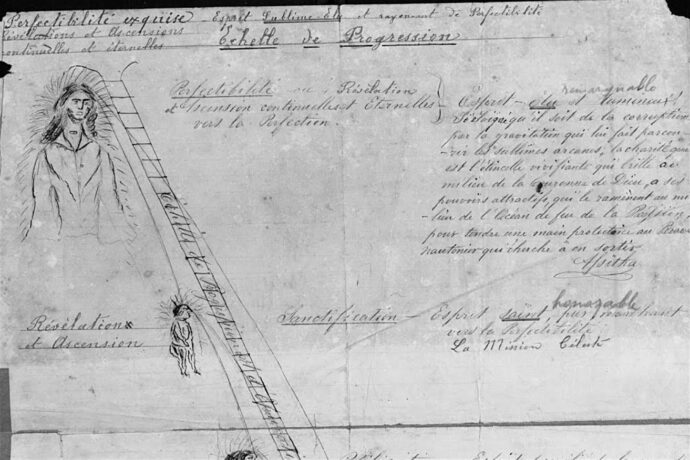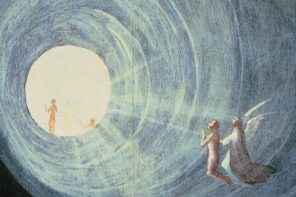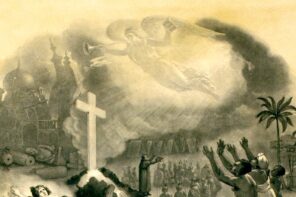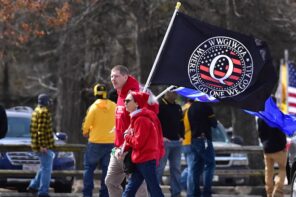Emily Clark’s new work, A Luminous Brotherhood, is an extensive study of a subject that has weirdly been neglected in scholarship: the career of the Afro-Creole Spiritualist Cercle Harmonique from 1858 to 1877. Religious studies scholar Clark has thoroughly mined the records of the Cercle, kept at the University of New Orleans, and produced one of the most important recent works I have seen in race and religion in American history.
By focusing on Afro-Creole Spiritualism in New Orleans, we get an extended, as well as intimate, look at how one very particular group, mostly men and free people of color, envisioned their ideal society through the voices of spirit mediums.
In doing so, they drew from French thinkers and historical experiences (including everyone from Rousseau, Robespierre, and Lamennais to the French and Haitian Revolutions), and applied those to the construction of what they referred to as “the Idea”—a republican society that would achieve liberty, equality and fraternity even in an American society burdened by slavery and racism since its birth.
I had a conversation with Clark, reflecting both on the book as well as on broader questions of race, religion and politics.
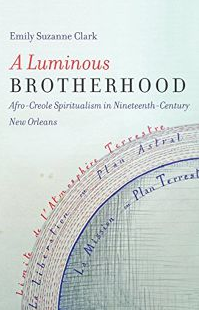
A Luminous Brotherhood: Afro-Creole Spiritualism in Nineteenth-Century New Orleans
Emily Suzanne Clark
UNC Press
September 2016
__________
Paul Harvey: Your book is about a group in mid-19th-century New Orleans called the Cercle Harmonique. Briefly, can you just explain who they were, and why we should care?
Emily Clark: The Cercle Harmonique was a group of Afro-Creoles, primarily men, in 19th-century New Orleans who believed they spoke with the spirits of the dead.
For about 20 years they held a couple of séances a week. They kept extensive records of these meetings, and those records span over 35 large register books. “Cercle Harmonique” is French for Harmonic Circle, and their name reflects their cultural identity. The men of the Cercle Harmonique came from African, French and Spanish backgrounds, were educated, grew up Catholic, and hailed from economically successful families. Their families were free during the antebellum period, and they were politically active.
Their séance records are utterly fascinating. Nearly all the communications were recorded in French, and messages arrived from Abraham Lincoln, Napoleon Bonaparte, John Brown, Montesquieu, Robert E. Lee, Confucius, Robespierre, George Washington, Jesus and Toussaint Louverture. And that’s an abbreviated list.
While the Cercle Harmonique itself was small, they occupy a unique historical space. Their séance table was an intersection of southern religion, Catholicism, the Atlantic world, black politics and alternative religious practice. When I initially started my dissertation research, the Cercle Harmonique was going to be just one chapter of a broader story (too broad, really). However, I realized that they were a bigger story than I initially thought. The practice of the Afro-Creole Spiritualists interwove New Orleans society and politics, issues of national American identity, reverberations of the French Revolution, and conceptions of the cosmos.
The Cercle Harmonique may have only been a small group, but they built an extensive spiritual and material network surrounding them.
The Cercle promoted something they called “the Idea.” What was that?
Neither the Cercle Harmonique nor the spirits they communicated with formally defined “the Idea,” but references to the Idea permeate their séance records. The Idea was a reformulation of the French revolutionary cry for liberté, égalité, fraternité. The Idea meant egalitarianism, equality and brotherhood. It was the central idea that organized the spirit world, and the spirit world was to be a model for the physical one. The spirit world, or spiritual republic, was a place of harmony because the Idea was its structural base.
The problems of the material world—its materialism, greed and inequality—could be solved if the Idea successfully took root in our world.
There are other good books about Spiritualism in the 19th century, including ones by Ann Braude, Bret Carroll and Molly McGarry. What makes your story different?
Ann Braude’s Radical Spirits, Bret Carroll’s Spiritualism in Antebellum America, and Molly McGarry’s Ghosts of Futures Past are all wonderful books that masterfully investigate Spiritualism, politics and gender. What’s missing from the historiography of American Spiritualism is a focus on race.
Unlike the subjects in previous books, the Spiritualists at the Cercle Harmonique’s table were Afro-Creole men. Their race shaped their practice in ways different from white Spiritualists in the Northeast U.S. While many Spiritualists were abolitionists, their whiteness and white privilege was an ever-present part of their religious practice.
American politics and society based their hierarchies in part on racial difference, but the spirits communicating with the Cercle Harmonique denied the ontology of race. Though many of their Spiritualist contemporaries believed that one’s race remained with a person in the spiritual spheres, the messages received by the Cercle Harmonique identified a spirit world without race. They were alone in the belief that bright spirits would replace raced bodies.
Members of the Cercle had, to say the least, a conflicted relationship with Catholicism. They were Catholics, but they blasted the Church constantly. Why?
The members of the Cercle Harmonique came from Catholic families, and Catholicism was a big part of their community identity. During the antebellum period New Orleans Catholicism could be a pretty liberal space: some priests recommended mesmeric healers, and many priests crossed the color line. Catholic churches were racially integrated, places of education, and some clerics baptized the illegitimate offspring of interracial parentage (though this was discouraged by the hierarchy). These priests were their allies. But New Orleans priests and nuns owned slaves. During the Civil War, the archdiocese proved to be a big supporter of the Confederacy.
Members of the Cercle Harmonique viewed the priests of their childhood as friends but the priests of their adulthood as greedy manipulators. The spirits compared priests to vampires and cockroaches even as the spirits of beloved clerics (the priests of their childhood and Saint Vincent de Paul) regularly guided the Cercle Harmonique from the spirit world. The Afro-Creole Spiritualists pushed Catholicism away while still keeping the aspects of the institution they liked.
Who is the intended audience for A Luminous Brotherhood?
I wrote the book with a wide audience in mind. I avoided jargon with the intent that my students, my advisors, and my family could all read and enjoy the book. In addition to academics, the book will appeal to anyone interested in Reconstruction-era politics and culture, the widespread belief in ghosts and spirits in America, the politics of race, African American religions, and New Orleans and/or Atlantic world history.
I hope the book will be assigned in undergraduate and graduate classes, especially undergraduate. Beyond the academy and its classrooms, A Luminous Brotherhood will bring an academic analysis of Spiritualism to the popular audience.
A recent Harris poll reported that 42 percent of Americans believe in ghosts. Whether one believes in ghosts or not, Americans are fascinated by them. A century and a half before the popularity of ghost-hunter shows on the SyFy Network and NBC’s award-winning show “Medium,” belief in spirit communication was serious and widespread in the United States. New Orleans in particular is known for ghosts and spirits, and this book takes a serious approach to one manifestation of this regional theme.
Not surprisingly, New Orleans tourist shops are always full of accessible academic books on local history and culture. I hope A Luminous Brotherhood will find a home in their book displays as well as university libraries and college classrooms.
Since the Civil War era, a number of other black religious movements have used unorthodox belief systems to advance radical political, social or religious ideas. How might you compare the Cercle, for example, to the Moorish Science Temple, or the Nation of Islam, or contemporary movements or writers (such as Black Lives Matter or Ta-Nahesi Coates)?
By definition alternative religious movements push against the status quo of religion, society, culture or politics. They are a critique of dominant culture, and therefore provide an effective platform for advancing radical and alternative views. For unorthodox black religious movements like the Cercle Harmonique, the Moorish Science Temple and others, this critique of dominant culture includes racism. Before Stokely Carmichael called for black power during 1966’s March Against Fear, these religious movements spoke out against white supremacy and white privilege.
The Cercle Harmonique argued that race was an empty signifier. Bodies were merely temporary envelopes that encased the spirit. Spirits mattered, raced bodies shouldn’t. This was a strong critique of American racism and white supremacy.
The Afro-Creole Spiritualists sought to dismantle the U.S.’s racial hierarchy, while the Moorish Science Temple of the 1920s placed its members outside it. By claiming an identity other than “black,” “colored” or “Negro,” the Moorish Science Temple’s members attempted to side-step Jim Crow.
In the 1960s the Nation of Islam flipped white supremacy on its head and argued that blacks were the original creation of Allah. Black Lives Matter protestors have been filmed chanting, “This is what theology looks like.” All these groups take a critical stance on the dominance of white power and privilege, and their religious views encourage such political critique.
What are some of the major themes of the book with contemporary resonance for religion, race and politics?
The book may be about a small group of Afro-Creole men in 19th-century New Orleans, but the story it tells connects to much today. Religion, race and politics are closely intertwined in American history and culture today. This is not a new phenomenon. I often tell my students that when we talk about American religion, we’re also talking about politics. And when we talk about American politics, we’re also talking about race. Religion, politics and race are not unconnected and sitting in separate boxes.
In A Luminous Brotherhood, we see religious practice and rhetoric make clear arguments for political equality. To be a Spiritualist in the Cercle Harmonique was to be political. Claiming equality and denying the ontology of race were inherently political arguments. Too often Americans think of the Civil Rights Movement as a unique point in time when religion, race and politics came together, but there is a much longer history to the convergence of these three themes.
What is the cover?
That is, for lack of a better term, a doodle. The séance records of the Cercle Harmonique were first kept by members, Henri Louis Rey and then François “Petit” Dubuclet. Petit handed the records onto his son-in-law René Grandjean, a French émigré and Spiritualist himself. Grandjean later donated the records to the special collections at the University of New Orleans.
Grandjean was an amateur historian and acted akin to the Cercle Harmonique’s first archivist. He organized the séance records, made notes in them based on conversations with his father-in-law, and translated a very small sampling of the messages into composition books. In one of these composition books, he also drew some depictions of the spirit and material world. The cover image is one such small drawing on the last page of one of his notebooks.
Grandjean also drew this amazing depiction of the “Ladder of Progress,” a visualization of the links between our world and the spirit world. The ladder connects a small seat at a séance table all the way up to what almost appears to be a picture of Jesus. This image [below] is one of my favorites. 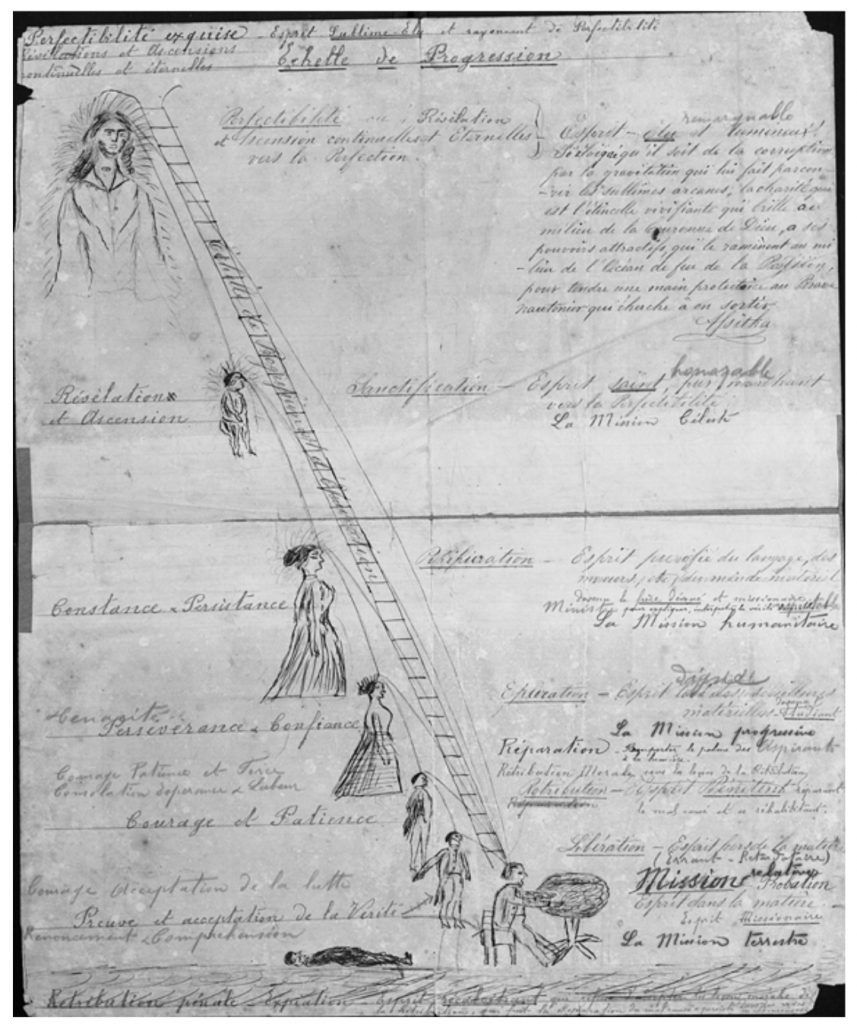
You teach courses on African American religions. What are some of the main points you hope your students learn during the semester? Where can we go to see some of your work?
My course introduces students to the variety of African American religions that developed in the Americas during and after the Atlantic slave trade up to today. The class includes discussion of West African religions, the impact of the Atlantic slave trade, the role of politics, the construction of racial identities, and most importantly, the diversity of African American religions. But we don’t examine the diversity within African American religions just for the sake of religious variety. Within various forms of Christianity, Islam, and even hip hop, we examine the interplay between religion, race, colonialism and self-determination. And for one day every semester I get to introduce students to my work on the Cercle Harmonique. They read a small collection of the séance records I’ve translated, and in class we discuss the Spiritualists, the significance of their spirits guides, the messages they received, and their context.


